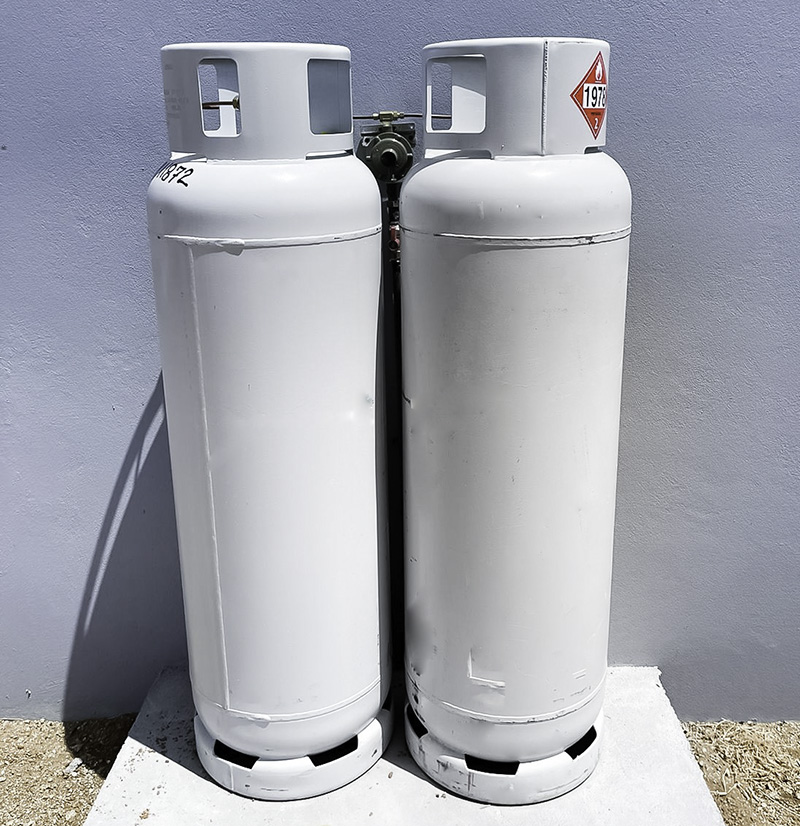Many times when we build our home, we think of everything else first and our gas installation last. Let’s change this! Your gas installation should not be an afterthought but part of your planning from the get go. In this tip we highlight why the location of your gas cylinder is very important. But first, some general tips:
Where to place your gas cylinder/ tank
- Always use copper tubing or copper pipe type L for your gas installation;
- Minimize the amount of connections;
- Use a reliable, well-made regulator;
- The installation should be leak free – our advice is to always use a certified installer for your gas installation.
Arugas recommends placing 2 cylinders at home. This will allow you to get a refill before you run out of gas. Another solution is to install a tank which Arugas will refill periodically at your house. Where should you place these cylinders and tank? At Arugas we follow the NFPA 58 guideline which states that:
- Cylinders or tank have to be placed on a concrete floor. Why? To provide stability for your cylinders and to prevent cylinders standing in water and sand since this accelerates corrosion;
- Cylinders or tank have to be accessible to be able to close the valves in case of an emergency. So do not place materials around your cylinders or tank, and keep the surrounding area clean (no plant growth, misplaced boxes or other materials);
- Cylinders are connected to each other and the rest of your installation with 2 pigtails and a regulator; A tank uses one pigtail;
- Within 1.5 meters (horizontal level, in both directions) from the height of the regulator and cylinders to the floor there should be no openings in the building;
- Within 3 meters (in all directions) from regulator and cylinders there should be no ignition sources.
Remember that you can always contact us with any questions or concerns.
Stay safe

 Important Contacts
Important Contacts
Phone: 585-1198
Email: [email protected]
 Good to know!
Good to know!
What is an ignition source?
An ignition source is a process or event which can cause a fire or explosion. Open flames, sparks, static electricity, and hot surfaces are all possible ignition sources.
A/C units, electrical sockets, welding equipment, dryers are some examples of ignition sources.
 Good to know!
Good to know!
When thinking about where to place your cylinders or tank, keep in mind that we have to be able to reach your cylinders to be able to exchange or refill them. So make sure they are placed in a location where our drivers can get to them. A good solution is to put them in a niche close to the fence.

